St. Augustine, Florida
From Wikipedia, the free encyclopedia
| St. Augustine San Agustín (Spanish) | ||
|---|---|---|
| City | ||
| St. Augustine, Florida | ||

Top, left to right: Castillo de San Marcos, St. Augustine Light, Flagler College, Lightner Museum, statue near the Cathedral Basilica of St. Augustine, St. Augustine Alligator Farm Zoological Park, Old St. Johns County Jail
| ||
| ||
| Nickname(s): Ancient City, Old City | ||
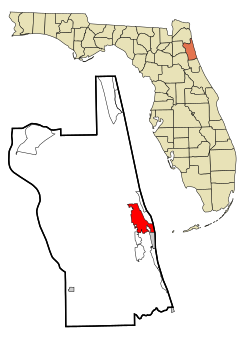 Location in St. Johns County and the state of Florida | ||
| St. Augustine | ||
| Coordinates: 29°53′41″N 81°18′52″WCoordinates: 29°53′41″N 81°18′52″W[1] | ||
| Country | United States | |
| State | Florida | |
| County | St. Johns | |
| Established | September 1565 | |
| Founded by | Pedro Menéndez de Avilés | |
| Government | ||
| • Type | Commission–Manager | |
| • Mayor | Nancy Shaver | |
| Area[1] | ||
| • City | 12.7 sq mi (33 km2) | |
| • Land | 9.4 sq mi (24 km2) | |
| • Water | 3.3 sq mi (9 km2) | |
| Elevation[2] | 0 ft (0 m) | |
| Population (2010)[3] | ||
| • City | 12,975 | |
| • Estimate (2013)[4] | 13,679 | |
| • Density | 1,376.2/sq mi (531.4/km2) | |
| • Urban | 69,173 (US: 399th) | |
| Time zone | EST (UTC-5) | |
| • Summer (DST) | EDT (UTC-4) | |
| ZIP code(s) | 32080, 32084, 32085, 32086, 32095, 32082, 32092 | |
| Area code(s) | 904 | |
| FIPS code | 12-62500[5] | |
| GNIS feature ID | 0308101[2] | |
| Website | City of St. Augustine | |
St. Augustine (Spanish: San Agustín) is a city in northeast Florida and the oldest continuously occupied European-established settlement in the continental United States.[6] The county seat of St. Johns County,[7] it is part of Florida's First Coast region and the Jacksonville metropolitan area. According to the 2010 census, the city population was 12,975. The United States Census Bureau's 2013 estimate of the city's population was 13,679, while the urban area had a population of 69,173 in 2012.[8]
Saint Augustine was founded on September 8, 1565, by Spanish admiral and Florida's first governor, Pedro Menéndez de Avilés. He named the settlement "San Agustín", as his ships bearing settlers, troops, and supplies from Spain had first sighted land in Florida on August 28, 1565, the feast day of St. Augustine.[9] The city served as the capital of Spanish Florida for over 200 years, and remained the capital of East Florida when the territory briefly changed hands between Spain and Britain. It was designated the capital of the Florida Territory until Tallahassee was made the capital in 1824. Since the late 19th century, St. Augustine's distinct historical character has made the city a major tourist attraction. It is also the headquarters for the Florida National Guard.
Contents
[hide]History[edit]
See also: Spanish Florida
Early exploration and attempts at settlement[edit]
The first European known to have explored the coasts of Florida was the Spanish explorer and governor of Puerto Rico, Juan Ponce de León, who likely ventured in 1513 as far north as the vicinity of the future St. Augustine, naming the peninsula he believed to be an island "La Florida" and claiming it for the Spanish crown.[10][11] Prior to the founding of St. Augustine in 1565, several earlier attempts at European colonization in what is now Florida were made by both Spain and France, but all failed.[12][13][14][15]
The French exploration of the area began in 1562, under the command of the Huguenot colonizer, Captain Jean Ribault. Ribault explored the St. Johns River to the north of St. Augustine before sailing north, ultimately founding the short-lived Charlesfort on what is now known as Parris Island, South Carolina. In 1564, Ribault's former lieutenant René Goulaine de Laudonnière headed a new colonization effort. Laudonnière explored St. Augustine Inlet and the Matanzas River, which the French named Rivière des Dauphins (River of Dolphins).[16] There they made contact with the local Timucua chief, Seloy, a subject of the powerful Saturiwachiefdom,[17][18][19] before heading north to the St. Johns River. There they established Fort Caroline.[20]
Later that year a group of mutineers from Fort Caroline fled the colony and turned pirate, attacking Spanish vessels in the Caribbean. The Spanish used this as a pretext to locate and destroy Fort Caroline, fearing it would serve as a base for future piracy, and wanting to discourage further French colonization. King Philip II of Spain quickly dispatched Pedro Menéndez de Avilésto go to Florida and establish a center of operations from which to attack the French.[21][22]
Founding[edit]
Pedro Menéndez's ships first sighted land on August 28, 1565, the feast day of St. Augustine of Hippo. In honor of the patron saint of his home town of Aviles, he named his colony's settlement San Agustín.[23] The Spanish sailed through the inlet into Matanzas Bay and disembarked near the Timucua town of Seloy on September 7.[24][25][26][27] Menéndez's goal was to quickly construct fortifications to protect his people and supplies as they were unloaded from the ships, and then to make a proper survey of the area to determine the best location for the fort. The location of this early fort has been confirmed through archaeological excavations directed by Kathleen Deagan on the grounds of what is now the Fountain of Youth Archaeological Park.[24][28] It is known that the Spanish occupied several Native American structures in Seloy, whose chief, the cacique Seloy, was allied with the Saturiwa, Laudonnière's allies. It is possible, but undemonstrated, that Menéndez fortified one of the occupied Timucua structures to use as his first fort at Seloy.[24] In the meantime, Jean Ribault, Laudonnière's old commander, arrived at Fort Caroline with more settlers for the colony, as well as soldiers and weapons to defend them.[29] He also took over the governorship of the settlement. Despite Laudonnière's wishes, Ribault put most of these soldiers aboard his ships for an assault on St. Augustine. However, he was surprised at sea by a violent storm[30] that lasted several days and wrecked his ships further south on the coast. This gave Menéndez the opportunity to march his forces overland for a surprise dawn attack on the Fort Caroline garrison, which then numbered several hundred people. Laudonnière and some survivors fled to the woods, and the Spanish killed almost everyone in the fort except for the women and children. With the French displaced, Menéndez rechristened the fort "San Mateo", and appropriated it for his own purposes. The Spanish then returned south and eventually encountered the survivors of Ribault's fleet near the inlet at the southern end of Anastasia Island. There Menéndez executed most of the survivors, including Ribault; the inlet has ever since been called Matanzas, the Spanish word for "slaughters".[31]
In 1566, Martín de Argüelles was born in Saint Augustine, the first birth of a child of European ancestry recorded in what is now the continental United States,[32] 21 years before the English settlement at Roanoke Island in Virginia Colony, and 42 years before the successful settlements of Santa Fe, New Mexico, and Jamestown, Virginia. In 1606, the first recorded birth of a black child in the continental United States was listed in the Cathedral Parish archives, thirteen years before enslaved Africans were first brought to the English colony at Jamestown in 1619.[33][34] In territory under the jurisdiction of the United States, only Puerto Rico has continuously occupied European-established settlements older than St. Augustine.[35]
Spanish period[edit]
St. Augustine was intended to be a base for further colonial expansion[36] across what is now the southeastern United States, but such efforts were hampered by apathy and hostility on the part of the Native Americans towards becoming Spanish subjects. The Saturiwa, one of the two principal chiefdoms in the area, remained openly hostile.[37] In 1566, the Saturiwa burned St. Augustine and the settlement was relocated. Traditionally it was thought to have been moved to its present location, though some documentary evidence suggests it was first moved to a location on Anastasia Island. At any rate, it was certainly in its present location by the end of the 16th century.[38]
The settlement also faced attacks from European forces. In April 1568 the French soldier Dominique de Gourgues led an attack on Spanish holdings. With the aid of the Saturiwa, Tacatacuru,[39] and other Timucua peoples who had been friendly with Laudonnière, de Gourgues attacked and burned Fort San Mateo, the former Fort Caroline. He executed his prisoners in revenge for the 1565 massacre,[40] but did not approach St. Augustine. Additional French expeditions were primarily raids and could not dislodge the Spanish from St. Augustine.[41] Following the failure of the Roanoke colony in Virginia, where no survivors were discovered by an overdue supply expedition, the English blamed St. Augustine. Consequently, on June 6, 1586, English privateer Sir Francis Drake raided St. Augustine, burning it[42] and driving surviving Spanish settlers into the wilderness. However, lacking sufficient forces or authority to establish an English settlement, Drake left the area.
In 1668, English privateer Robert Searle attacked and plundered St. Augustine.[43][44] In the aftermath of his raid, the Spanish began in 1672 to construct a more secure fortification, the Castillo de San Marcos.[45] It stands today as the oldest fort in the United States. Its construction took a quarter of a century, with many later additions and modifications.[46]
The Spanish did not import many slaves to Florida for labor,[47] as it was primarily a military outpost, without a plantation economy like that of the British colonies. As the British planted settlements south along the Atlantic coast, the Spanish encouraged their slaves to escape for sanctuary in Florida. If the fugitives converted to Catholicism and swore allegiance to the king of Spain, they would be given freedom, arms, and supplies. Moving southward on the coast from the northern colonies, the British founded Charleston in 1670 and Savannah in 1733. In response, Spanish Governor Manual de Montiano in 1738 established the first legally recognized free community of ex-slaves, known asGracia Real de Santa Teresa de Mose, or Fort Mose, to the north of St. Augustine to serve as a defensive outpost.[48]
In 1740, British forces attacked St. Augustine from their colonies in the Carolinas and Georgia. The largest and most successful of these attacks was organized by Governor and General James Oglethorpe of Georgia;[49] he split the Spanish-Seminole alliance when he gained the help of Ahaya the Cowkeeper,[50] chief of the Alachua band of theSeminole tribe. The Seminole then occupied territory mostly in the north of Florida, but later migrated into the center and south of the peninsula.
In the largest campaign of 1740, Oglethorpe commanded several thousand colonial militia and British regulars, along with Alachua band warriors, and invaded Spanish Florida. He conducted the Siege of St. Augustine as part of the War of Jenkin's Ear (1739–1742). During this siege, the black community of St. Augustine was important in resisting the British forces.[51] The leader of Fort Mose during the battle was Capt. Francisco Menendez:[52] born in Africa, he twice escaped from slavery. In Florida, he played an important role in defending St. Augustine from British raids. The Fort Mose site (of which only ruins remain) is now owned and maintained by the Florida Park Service. It has been designated a National Historic Landmark.[53]
British period[edit]
In 1763, the Treaty of Paris ended the Seven Years' War. Spain ceded Florida and St. Augustine to the British, in exchange for their relinquishing control of occupiedHavana.[54] With the change of government, most of the Spanish Floridians and many freedmen departed from St. Augustine for Cuba. Only a few remained to handle unsold property and settle affairs.
James Grant was appointed the first governor of East Florida. He served from 1764 until 1771, when he returned to Britain due to illness. He was replaced as governor byPatrick Tonyn. During this brief period, the British converted the monks' quarters of the former Franciscan monastery into military barracks,[55] which were named St. Francis Barracks. They also built The King's Bakery, which is believed to be the only extant structure in the city built entirely during the British period.
The Lieutenant Governor of East Florida under Governor Grant was John Moultrie, who was born in South Carolina. He had served under Grant as a major in the Cherokee War and remained loyal to the British Crown. Moultrie had three brothers who served in the Patriot army during the American War of Independence.[56]
Moultrie was granted large tracts of land in the St. Augustine vicinity, upon which he established the plantation of "Bella Vista." He owned another 2,000-acre (8.1 km2) plantation in the Tomoka River basin named "Rosetta".[57] While acting as the lieutenant governor, he lived in the Peck House on St. George Street.[58]
During the British period, Andrew Turnbull, a friend of Grant, established the settlement of New Smyrna in 1768. Turnbull recruited indentured servants from the Mediterranean area, primarily the island ofMinorca.[59] The conditions at New Smyrna were so abysmal[60] that the settlers rebelled en masse in 1777; they walked the 70 miles (110 km) to St. Augustine, where Governor Tonyn gave them refuge.[61][62] The Minorcans and their descendants stayed on in St. Augustine through the subsequent changes of flags, and marked the community with their language, culture, cuisine and customs.[63]
Second Spanish period[edit]
The Treaty of Paris in 1783 gave the American colonies north of Florida their independence, and ceded Florida to Spain in recognition of Spanish efforts on behalf of the American colonies during the war.
On September 3, 1783, by Treaty of Paris, Britain also signed separate agreements with France and Spain. In the treaty with Spain, the colonies of West Florida, captured by the Spanish, and East Florida were given to Spain, as was the island of Minorca, while the Bahama Islands, Grenada and Montserrat, captured by the French and Spanish, were returned to Britain.[64][65]
Florida was under Spanish control again from 1784 to 1821. There was no new settlement, only small detachments of soldiers, as the fortifications decayed. Spain itself was the scene of war between 1808 and 1814 and had little control over Florida. In 1821 the Adams–Onís Treaty peaceably turned the Spanish provinces in Florida and, with them, St. Augustine, over to the United States. There were only three Spanish soldiers stationed there in 1821.[66]
A relic of this second period of Spanish rule is the Constitution monument, an obelisk honoring the Spanish Constitution of 1812,[67] one of the most liberal of its time. In 1814 King Ferdinand VII of Spain abolished that constitution and had monuments to it torn down; the one in St. Augustine is said to be the only one to survive.[68][69]
American period[edit]
See also: St. Augustine in the American Civil War
Florida was ceded to the United States by Spain in the 1819 Adams–Onís Treaty,[70] ratified in 1821; Florida officially became a U.S. possession as the Florida Territory in 1822.[71] Andrew Jackson, a future president, was appointed its military governor and then succeeded by William Pope Duval, who was appointed territorial governor in April 1822.[72] Florida gained statehood in 1845.
After 1821, the United States renamed the Castillo de San Marcos (called Fort St. Marks by the British) "Fort Marion" in honor of Francis Marion,[73] known as the "Swamp Fox" of the American Revolution.
During the Second Seminole War of 1835–1842, the fort served as a prison for Seminole captives, including the famed leader Osceola, as well as John Cavallo (John Horse) the black Seminole and Coacoochee (Wildcat), who made a daring escape from the fort with 19 other Seminoles.[74][75]
In 1861, the American Civil War began; Florida seceded from the Union and joined the Confederacy. On January 7, 1861, prior to Florida's formal secession, a local militia unit, the St. Augustine Blues, took possession of St. Augustine's military facilities, including Fort Marion[76]and the St. Francis Barracks, from the lone Union ordnance sergeant on duty. On March 11, 1862, crew from the USS Wabash reoccupied the city for the United States government without opposition.[76][77][78] It remained under Union control for the remainder of the war.[79] In 1865, Florida rejoined the United States.
After the war, freedmen in St. Augustine established the community of Lincolnville in 1866, named after President Abraham Lincoln. Lincolnville, which had preserved the largest concentration of Victorian Era homes in St. Augustine, became a key setting for the Civil Rights Movement in St. Augustine a century later.[80]
After the Civil War, Fort Marion was used twice, in the 1870s and then again in the 1880s, to confine first Plains Indians, and then Apaches, who were captured by the US Army[81]in the West.[82] The daughter of Geronimo was born at Fort Marion,[83][84] and was named Marion. She later changed her name. The fort was also used as a military prison during the Spanish–American War of 1898.[85] It was removed from the Army's active duty rolls in 1900[86] after 205 years of service under five different flags. It is now run by theNational Park Service, and is preserved as the Castillo de San Marcos National Monument, a National Historic Landmark.[87]
Flagler era[edit]
Henry Flagler, a partner with John D. Rockefeller in Standard Oil, arrived in St. Augustine in the 1880s. He was the driving force behind turning the city into a winter resort for the wealthy northern elite.[88] Flagler bought a number of local railroads and incorporated them into the Florida East Coast Railway; it built its headquarters in St. Augustine.[89]
Flagler commissioned the New York architectural firm of Carrère and Hastings to design a number of extravagant buildings in St. Augustine, among them the Ponce de Leon Hotel and the Alcazar Hotel.[90] He built the latter partly on land purchased from his friend and associate Andrew Anderson and partly on the bed of Maria Sanchez Creek,[91]which Flagler had filled with the archaeological remains of the original Fort Mose.[92][93] Flagler built or contributed to several churches, including Grace Methodist, Ancient City Baptist, and, most ornate, the Venetian-style Memorial Presbyterian Church.[94]
Flagler commissioned Albert Spalding to design a baseball park in St. Augustine,[95] and in the 1880s, the waiters at his hotels, under the leadership of headwaiter Frank P. Thompson,[96][97] formed one of America's pioneer professional Negro League baseball teams, the Ponce de Leon Giants.[98] Members of the New York African-American professional team, the Cuban Giants, wintered in St. Augustine, where they played for the Ponce de Leon Giants.[95][99] These included Frank Grant, who in 2006 was inducted into the Baseball Hall of Fame.[100]
In the 1880s, no public hospital was operated between Daytona Beach and Jacksonville. On May 22, 1888, Flagler invited the most influential women of St. Augustine to a meeting where he offered them a hospital if the community would commit to operate and maintain the facility. The Alicia Hospital opened March 1, 1890, as a not-for-profit institution; it was renamed Flagler Hospitalin his honor in 1905.[101][102]
The St. Augustine Alligator Farm, founded in 1893,[103][104] is one of the oldest commercial tourist attractions in Florida, as is the Fountain of Youth Archaeological Park, which has been a tourist attraction since around 1902.[105] The city is the eastern terminus of the Old Spanish Trail, a promotional effort of the 1920s linking St. Augustine to San Diego, California, with 3,000 miles (4,800 km) of roadways.[106][107]
The Florida land boom of the 1920s left its mark on St. Augustine with the residential development (though not completion) of Davis Shores, a landfill project of the developer D.P. Davis on the marshy north end ofAnastasia Island.[108] It was promoted as "America's Foremost Watering Place", and could be reached from downtown St. Augustine by the Bridge of Lions, billed as "The Most Beautiful Bridge in Dixie".[109]
During World War II, St. Augustine hotels were used as sites for training Coast Guardsmen,[110] including the artist Jacob Lawrence[111] and actor Buddy Ebsen.[112] It was a popular place for R&R for soldiers from nearby Camp Blanding, including Andy Rooney[113] and Sloan Wilson. Wilson later wrote the novel The Man in the Gray Flannel Suit, which became a classic of the 1950s.[114]
Civil rights movement[edit]
Main article: St. Augustine movement
Nearly a decade after the Supreme Court ruling in Brown v. Board of Education that segregation of schools was unconstitutional, African Americans were still trying to get the city to integrate the public schools. They were also trying to integrate public accommodations, such as lunch counters,[117] and were met with arrests[118] and Ku Klux Klan violence.[119][120] The police arrested non-violent protesters for participating in peaceful picket lines, sit-ins, and marches. Homes of blacks were firebombed,[121]black leaders were assaulted and threatened with death, and others were fired from their jobs.
In the spring of 1964, St. Augustine civil rights leader Robert Hayling[122] asked the Southern Christian Leadership Conference (SCLC) and its leader Martin Luther King, Jr. for assistance.[123] From May until July 1964, they carried out marches, sit-ins, and other forms of peaceful protest in St. Augustine. Hundreds of black and white civil rights supporters were arrested,[115] and the jails were filled to overflowing.[124] At the request of Hayling and King, white civil rights supporters from the North, including students, clergy, and well-known public figures, came to St. Augustine and were arrested together with southern activists.[125][126]
The KKK responded with violent attacks that were widely reported in national and international media.[127] Popular revulsion against the Klan violence in St. Augustine generated national sympathy for the black protesters and became a key factor in Congressional passage of the Civil Rights Act of 1964,[128] leading eventually to passage of the Voting Rights Act of 1965,[129] both of which were to provide federal enforcement of constitutional rights.[130]
In 2010, at the invitation of Flagler College, Andrew Young premiered his movie, Crossing in St. Augustine,[131] about the 1963–1964 struggles against Jim Crow segregation in the city. Young had marched in St. Augustine where he was physically assaulted by hooded members of the Ku Klux Klan in 1964,[132] and later served as US ambassador to the United Nations.[132]
Modern era[edit]
The city is a popular travel destination for its Spanish colonial-era buildings as well as elite 19th-century architecture. The city's historic center is anchored by St. George Street, which is lined with historic houses from various periods. Most of these houses are reconstructions of buildings that had been burned or demolished over the years, though a few of them are original.[133][134]
The city has a privately funded Freedom Trail of historic sites of the civil rights movement,[135] and a museum at the Fort Mose site, the location of the 1738 free black community.[136][137] Historic Excelsior School, built in 1925 as the first public high school for blacks in St. Augustine,[138] has been adapted as the city's first museum of African-American history. In 2011, the St. Augustine Foot Soldiers Monument, a commemoration of participants in the civil rights movement, was dedicated in the downtown plaza a few feet from the former Slave Market.[139] Robert Hayling, the leader of the St. Augustine movement,[140] and Hank Thomas, who grew up in St. Augustine and was one of the original Freedom Riders, spoke at the dedication ceremony.[141] Another corner of the plaza was designated "Andrew Young Crossing" in honor of the civil rights leader,[142] who received his first beating in the movement in St. Augustine in 1964.[143][144][145] Bronze replicas of Young's footsteps have been incorporated into the sidewalk that runs diagonally through the plaza, along with quotes expressing the importance of St. Augustine to the civil rights movement. That project was publicly funded. Some important landmarks of the civil rights movement, including the Monson Motel and the Ponce de Leon Motor Lodge,[146] had been demolished in 2003 and 2004.[147]
Geography and climate[edit]
| This section does not cite any references or sources. (August 2015) |
St. Augustine is located at 29°53′41″N 81°18′52″W (29.8946910, −81.3145170).[1] According to the United States Census Bureau, the city has a total area of 10.7 square miles (27.8 km2), 8.4 square miles (21.7 km2) of which is land and 2.4 square miles (6.1 km2) (21.99%) is water. Access to the Atlantic Ocean is via the St. Augustine Inlet of the Matanzas River.
St. Augustine has a humid subtropical climate or Cfa – typical of the Gulf and South Atlantic states. The low latitude and coastal location gives the city a mostly warm and sunny climate. Like much of Florida, St. Augustine enjoys a high number of sunny days, averaging 2,900 hours annually. Unlike much of the continental United States, St. Augustine’s driest time of year is winter. The hot and wet season extends from May through October, while the cool and dry season extends November through April.
In the hot season average daytime highs are in the upper 80s to low 90s °F (26° to 33 °C) and average night-time lows are in the low 70s °F (21 °C). The Bermuda High pumps in hot and unstable tropical air from the Bahamas and Gulf of Mexico, which help create the daily thundershowers that are so typical in the summer months. Intense but very brief downpours are common in mid-summer in the city. Fall and spring are considered near perfect, weather-wise, being warm and sunny with highs in the 75 to 80 F (21 to 24 °C) range and overnight lows in the 50s to low 60s (10 to 17 °C).
In the warm and dry season, St. Augustine has mild and sunny weather typical of the Florida peninsula. The coolest months are from December through February, with average daytime highs that range from 65 to 70 °F (18 to 21 °C) and nighttime lows in the 46-49 F (8 to 10 °C) range. From November through April, St. Augustine often has long periods of rainless weather. Often early spring (April) can see near drought conditions with brush fires and water restrictions in place. St. Augustine averages six frosts per year. Tropical cyclones occasionally impact the region; however, like most areas prone to tropical cyclones, a direct hit by a major hurricane is rare. The last direct hit by a major hurricane to the city was Hurricane Dora in 1964.
| [hide]Climate data for St. Augustine | |||||||||||||
|---|---|---|---|---|---|---|---|---|---|---|---|---|---|
| Month | Jan | Feb | Mar | Apr | May | Jun | Jul | Aug | Sep | Oct | Nov | Dec | Year |
| Average high °F (°C) | 66 (19) | 69 (21) | 73 (23) | 78 (26) | 84 (29) | 88 (31) | 90 (32) | 89 (32) | 86 (30) | 81 (27) | 74 (23) | 68 (20) | 79 (26) |
| Average low °F (°C) | 46 (8) | 49 (9) | 53 (12) | 58 (14) | 65 (18) | 71 (22) | 72 (22) | 73 (23) | 71 (22) | 65 (18) | 56 (13) | 49 (9) | 61 (16) |
| Average precipitation inches (mm) | 2.7 (69) | 3.1 (79) | 3.9 (99) | 2.6 (66) | 3.1 (79) | 5.6 (142) | 5.7 (145) | 6.5 (165) | 7.5 (191) | 4.6 (117) | 2.3 (58) | 2.4 (61) | 49.49 (1,257) |
| Source: [148] | |||||||||||||
Demographics[edit]
| Historical population | |||
|---|---|---|---|
| Census | Pop. | %± | |
| 1830 | 1,708 | — | |
| 1840 | 2,450 | 43.4% | |
| 1850 | 1,934 | −21.1% | |
| 1860 | 1,914 | −1.0% | |
| 1870 | 1,717 | −10.3% | |
| 1880 | 2,293 | 33.5% | |
| 1890 | 4,742 | 106.8% | |
| 1900 | 4,272 | −9.9% | |
| 1910 | 5,494 | 28.6% | |
| 1920 | 6,192 | 12.7% | |
| 1930 | 12,111 | 95.6% | |
| 1940 | 12,090 | −0.2% | |
| 1950 | 13,555 | 12.1% | |
| 1960 | 14,734 | 8.7% | |
| 1970 | 12,352 | −16.2% | |
| 1980 | 11,985 | −3.0% | |
| 1990 | 11,692 | −2.4% | |
| 2000 | 11,592 | −0.9% | |
| 2010 | 12,975 | 11.9% | |
| Est. 2014 | 13,841 | [149] | 6.7% |
As of the 2010 United States Census, there were 12,975 people, 5,743 households, and 2,679 families residing in the city. The population density was 1,376.2 people per square mile (531/km²). There were 6,978 housing units at an average density of 549.4 per square mile (211.4/km²). The racial makeup of the city was 84.2% Caucasian, 11.6% African American, 0.4% Native American, 1.2% Asian, 0.1% Pacific Islander, 0.8% from other races, and 1.6% from two or more races. Hispanic or Latino of any race were 5.1% of the population.
There were 5,743 households out of which 14.6% had children under the age of 18 living with them, 31.7% were married couples living together, 10.9% had a female householder with no husband present, and 53.4% were non-families. 37.8% of all households were made up of individuals and 14.4% had someone living alone who was 65 years of age or older. The average household size was 2.03 and the average family size was 2.67.
In the city the population was spread out with 13.1% under the age of 18, 15.3% from 18 to 24, 23.9% from 25 to 44, 25.2% from 45 to 64, and 19% who were 65 years of age or older. The median age was 42.6 years. For every 100 females there were 88.1 males. For every 100 females age 18 and over, there were 85.8 males.
The median income for a household in the city was $36,424, and the median income for a family was $56,055. Males had a median income of $32,409 versus $30,188 for females. The per capita income for the city was $23,485. About 7.6% of families and 21.1% of the population were below the poverty line, including 18.8% of those under age 18 and 24.4% of those age 65 or over.
Transportation[edit]
Highways[edit]
 Interstate 95 runs north–south.
Interstate 95 runs north–south. U.S. Route 1 runs north–south.
U.S. Route 1 runs north–south. State Road A1A runs north–south.
State Road A1A runs north–south. State Road 16 runs east–west
State Road 16 runs east–west State Road 207 runs northeast–southwest
State Road 207 runs northeast–southwest State Road 312 runs east–west
State Road 312 runs east–west
Buses[edit]
Bus service is operated by the Sunshine Bus Company. Buses operate mainly between shopping centers across town, but a few go to Hastings and Jacksonville, where one can connect to JTA for additional service across Jacksonville.
Airport[edit]
Main article: Northeast Florida Regional Airport
St. Augustine has one public airport 4 miles (6.4 km) north of town. It has six runways (with three water runways for seaplanes).[151] The airport was once served by Skybus, however Skybus ceased operations as of April 4, 2008.[152] Today, in addition to private flights and tour helicopters, Frontier Airlines provides service to Trenton, NJ[153] andWashington (beginning on September 8, 2014).[154]
Points of interest[edit]
Spanish Eras
- Avero House
- Castillo de San Marcos National Monument
- Fort Matanzas National Monument
- Fort Mose Historic State Park
- Nombre de Dios
- Gonzalez-Alvarez House
- Fountain of Youth Archaeological Park
- The Spanish Military Hospital Museum
- St. Francis Barracks
- Colonial Quarter
- Ximenez-Fatio House
- Oldest Wooden Schoolhouse
- Tolomato Cemetery and Huguenot Cemetery
British Era
Pre-Flagler Era
- St. Augustine Lighthouse and Museum
- Markland Mansion
Flagler Era
- Ponce de León Hotel
- Casa Monica Hotel
- Hotel Alcazar
- Zorayda Castle
- Bridge of Lions
- Old St. Johns County Jail
- Ripley's Believe it or Not! Museum located in 1887 mansion of William Worden.
- Alligator Farm
Historic Churches
- Grace United Methodist Church
- Cathedral Basilica of St. Augustine
- Memorial Presbyterian Church
- Trinity Church of St. Augustine
Lincolnville National Historic District – Civil Rights Era
- Freedom Trail of Historic Sites of the Civil Rights Movement
- Excelsior School Museum of African American History
- St. Benedict the Moor School
Other
- Anastasia State Park
- Florida School for the Deaf and Blind
- St. Augustine Amphitheatre
- St. Augustine Pirate & Treasure Museum
- World Golf Hall of Fame
See also: List of St. Augustine parks
Sister cities[edit]
See also: List of sister cities in Florida
 Avilés, Spain
Avilés, Spain Cartagena, Colombia
Cartagena, Colombia Minorca, Spain
Minorca, Spain Santo Domingo, Dominican Republic
Santo Domingo, Dominican Republic
Education[edit]
Primary and secondary education in St. Augustine is overseen by the St. Johns County School District. There are no county high schools located within St. Augustine's current city limits, but St. Augustine High School, Pedro Menendez High School, and St. Johns Technical High School are located in the vicinity. The Florida School for the Deaf and Blind, a state-operated boarding school for deaf and blind students, was founded in the city in 1885.[155] The Catholic Diocese of St. Augustine operates the St. Joseph Academy, Florida's oldest Catholic high school, to the west of the city.[156]
There are several institutions of higher education in and around St. Augustine. Flagler College is a four-year liberal arts college founded in 1968. It is located in the formerPonce de León Hotel in downtown St. Augustine.[157] St. Johns River State College, a state college in the Florida College System, has its St. Augustine campus just west of the city. Also in the area are the University of North Florida, Jacksonville University, and Florida State College at Jacksonville in Jacksonville.[158]
The institution now known as Florida Memorial University was located in St. Augustine from 1918 to 1968, when it relocated to its present campus in Miami. Originally known as Florida Baptist Academy, then Florida Normal, and then Florida Memorial College, it was a historically black institution and had a wide impact on St. Augustine while it was located there. During World War II it was chosen as the site for training the first blacks in the U. S. Signal Corps. Among its faculty members was Zora Neale Hurston; a historic marker is placed at the house where she lived while teaching at Florida Memorial[159] (and where she wrote her autobiography Dust Tracks on a Road.)[160][161]
Notable residents[edit]
- Jim Albrecht, poker tournament director and commentator
- Andrew Anderson, physician, St. Augustine mayor
- John Alexander Armstrong, political theorist and scholar
- Murray Armstrong, hockey coach
- Frances Bemis, public relations specialist
- Jorge Biassou, Haitian revolutionary and first black American general
- Richard Boone, actor
- James Branch Cabell, novelist
- Doug Carn, jazz musician
- Cris Carpenter, Major League baseball player
- Ray Charles, pianist, singer, composer
- Earl Cunningham, artist
- Alexander Darnes, born a slave, became a celebrated physician
- Edmund Jackson Davis, governor of Texas
- Frederick Delius, composer
- Stephen Farrelly, professional wrestler
- Henry Flagler, industrialist
- Willie Galimore, football player
- Michael Gannon, historian
- Laura Jane Grace, singer
- William H. Gray, U. S. congressman and president of the United Negro College Fund
- Hurley Haywood endurance race car driver[162]
- Martin Johnson Heade, artist
- Louise Homer, opera singer
- Sidney Homer, composer
- Jack D. Hunter, novelist, author of The Blue Max
- Zora Neale Hurston, novelist and folklorist
- Lindy Infante, professional football coach
- Willie Irvin, professional football player
- Brandon James, professional football player
- Stetson Kennedy, author and human rights activist
- Jack Temple Kirby, historian
- LaChanze, Tony Award & Emmy Award winning actor, singer, and dancer
- Scott Lagasse Jr., race car driver
- Charlie LaPradd, college football player, college president
- Jacob Lawrence, artist
- Sinclair Lewis, novelist
- John C. Lilly, neuroscientist, developer of the isolation tank
- William W. Loring, Confederate general
- Mary MacLane, author
- Albert Manucy, historian, author, Fulbright Scholar
- George McGovern, U.S. Senator, presidential candidate
- Howell W. Melton, United States district judge
- Howell W. Melton Jr., attorney, law firm managing partner
- Johnny Mize, Hall of Fame baseball player
- Prince Achille Murat, nephew of Napoleon Bonaparte
- David Nolan, author and historian
- Osceola, Seminole War leader (held prisoner at Fort Marion, now Castillo de San Marcos)
- Tom Petty, rock musician
- Scott Player, professional football punter
- Verle A. Pope, state legislator
- Richard Henry Pratt, soldier and educator
- Marjorie Kinnan Rawlings, novelist
- Marcus Roberts, musician
- Gamble Rogers, folksinger
- John M. Schofield, Union general
- Steven L. Sears, television writer-producer
- Edmund Kirby Smith, Confederate general
- Steve Spurrier, college/pro (American) football coach
- Peter Taylor, novelist
- Travis Tomko, professional wrestler
- The Wobbly Toms, music group
- Felix Varela, Cuban national hero
- Augustin Verot, first Bishop of St. Augustine
- Patty Wagstaff, aerobatic pilot
- DeWitt Webb, physician, St. Augustine mayor, state representative
- David Levy Yulee, first Jewish U.S. Senator, Levy County and Yulee, Florida namesake
Gallery[edit]
References[edit]
- ^ a b c "GNIS Detail – Saint Augustine". Geographic Names Information System. 2011-02-12. Retrieved2011-04-23.
- ^ a b "US Board on Geographic Names". United States Geological Survey. 2007-10-25. Retrieved 2008-01-31.
- ^ "State & County QuickFacts". Census.gov. U.S. Census Bureau, Population Division. April 1, 2010.
- ^ "Population Estimates". United States Census Bureau. Retrieved 2015-04-22.
- ^ "American FactFinder". United States Census Bureau. Retrieved 2008-01-31.
- ^ "Florida: St. Augustine Town Plan Historic District". Nationa



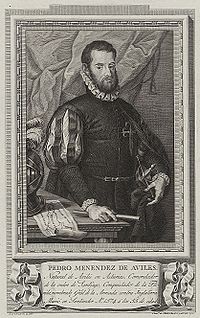

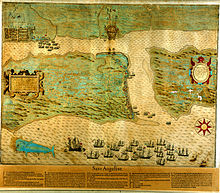
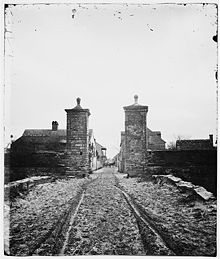

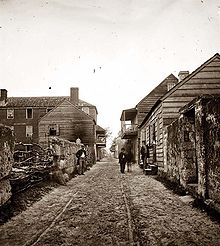




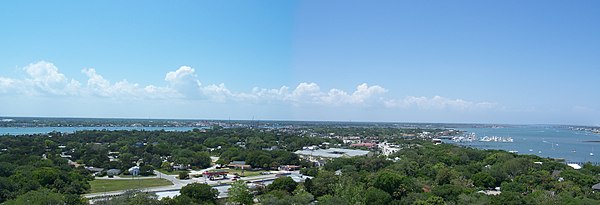



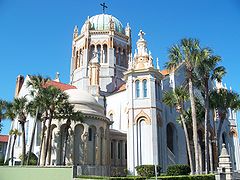




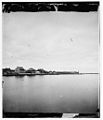




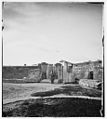

No comments:
Post a Comment